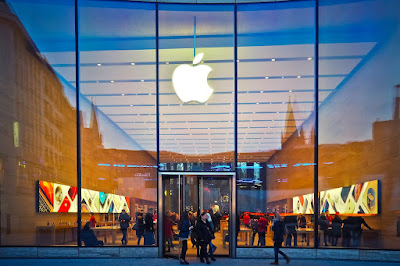A new exchange traded fund (ETF), which is the abovementioned, will be listed on 31 Jan 2024 on the Singapore Exchange (SGX).
This ETF came in at the appropriate time when the Land of the Rising Sun is looking to rise again as an economic powerhouse after a period of more than three “lost” decades. Using Japan’s main representative stock index, the Nikkei 225, which was around 35,963 points as of 19 Jan 2024, it is fast approaching the last high of 38,915 which was set back in Oct 19891.
However, what caught my attention were the two phrases “active” and “powered by AI”; these are firsts in the SGX ETF universe. Though active, the ETF will be benchmarked against the Tokyo Stock Price Index (TOPIX). On the artificial intelligence front, using datasets ranging from fundamentals, technical, qualitative, quantitative, etc., the AI and machine learning models will select between 50 and 100 securities for the ETF’s portfolio from the top 1,000 stocks listed and traded in the Tokyo and Nagoya exchanges. The ETF’s holdings will be diversified across sectors and market capitalization.
The initial public offering period is until 25 Jan 2024, at an issue price of SGD 1.00. More information of the ETF is available at its site (link under References below).
Picture credit: LittleMouse from pixabay.com
The Bedokian’s Take
It is important to understand that the underlying value of the ETF is the Japanese Yen (JPY), so this means that regardless of whether you are getting the SGD or USD denominated security, the primary concern will be JPY itself, therefore there is foreign exchange risk involved. The JPY has been on a downward trend against the SGD since the former’s last highs in 2012, with around a 43% drop between then and now2. With a possible Japanese economic boom coming over the horizon, a strengthening JPY would be favourable for early investors of this ETF (but maybe not so good for tourists heading there).
Being an actively managed ETF, the current expense ratio of 0.7% sits in between passive/tracking ETFs’ (e.g. U.S. listed EWJ with 0.5%3) and the active unit trusts’ (minimally 1% and above). Also, for peer comparison, a U.S. listed Japan-focused active ETF (JPAN) has an expense ratio of 0.79%4. Thus, with AI to boot, the expense costs seem reasonable.
As this ETF is very country-oriented, in terms of suitability, my viewpoint is that it is probably good for those who has a substantial portfolio size proportioned by asset class level and wish to diversify one tier below, i.e., by equities > region/country.
References
https://www.lionglobalinvestors.com/en/fund-lion-nomura-japan-active-etf-powered-by-ai.html
1 – Yahoo Finance. 20 Jan 2024.
2 – Japanese Yen/Singapore Dollar. Marketwatch. https://www.marketwatch.com/investing/currency/jpysgd (accessed 20 Jan 2024)
3 – iShares MSCI Japan ETF. ETFDB.com. 19 Jan 2024. https://etfdb.com/etf/EWJ/#etf-ticker-profile (accessed 20 Jan 2024)
4 – Matthews Japan Active ETF. ETFDB.com. 19 Jan 2024. https://etfdb.com/etf/JPAN/#etf-ticker-profile (accessed 20 Jan 2024)


